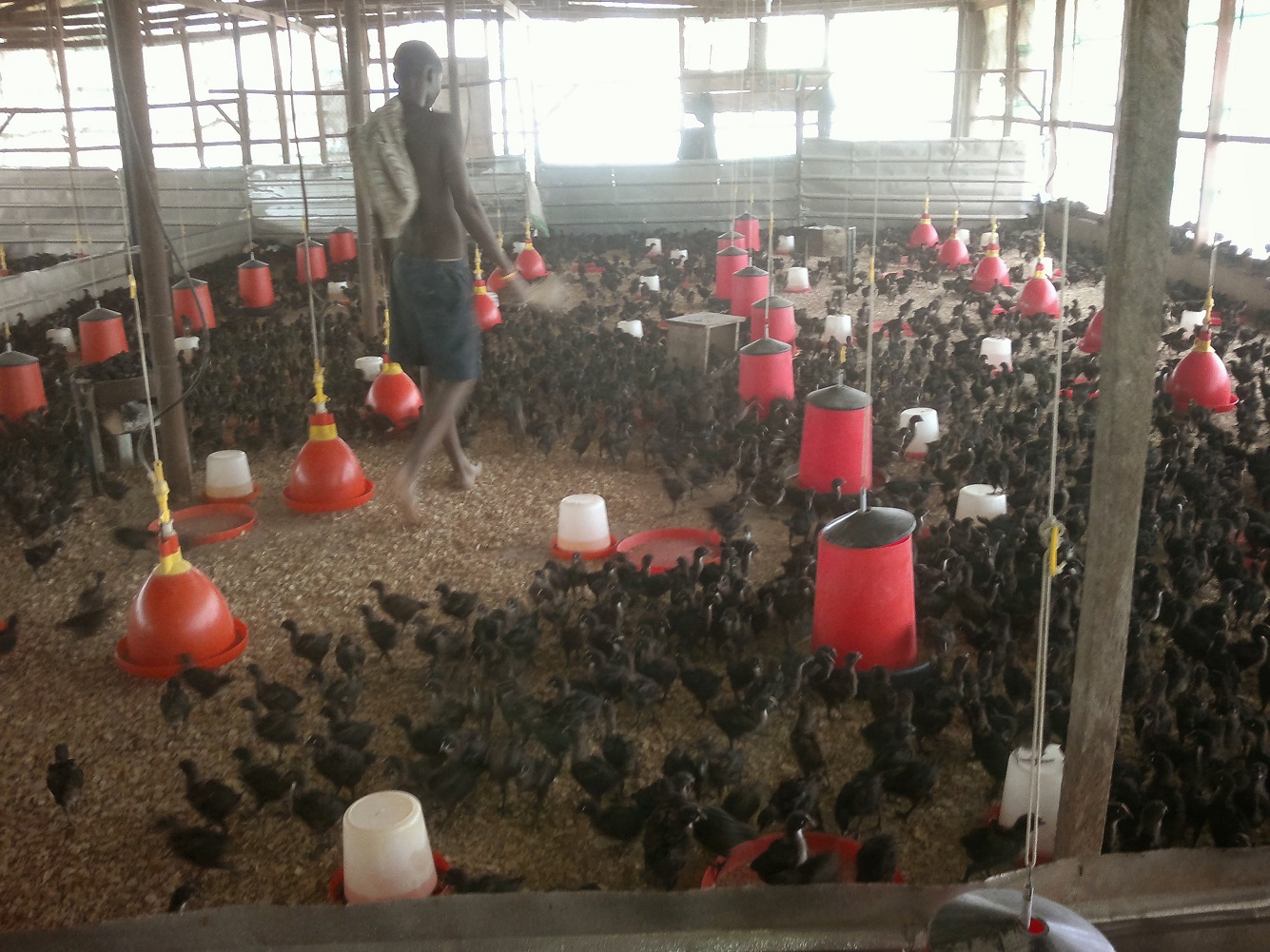Deep Litter System or Battery Cage System?

This article is to educate you before you choose between deep litter system and battery cage system of poultry rearing. I want to quickly but thoroughly answer one of the most commonly asked questions about these two housing systems.
Just so we are on the same page, deep litter system is where chickens are raised on concrete floor covered with bedding material such as wood shavings. The purpose of the litter material is to insulate the floor and prevent birds from having direct contact with the bare floor. Battery cage system on the other hand is where birds are kept in small compartments of galvanized irons built into cages. The cages are usually partitioned into cells. Yeah, it’s more like imprisoning chickens in a friendly way.
- Advertisement -
- Advertisement -
Before you choose

Let’s get back to choosing between deep litter and battery cage systems. You will be wrong to think that you will get a direct answer as to which one of the two you should choose. No! There is no such rule anywhere. The professional help I will give you is to open your eyes to the pros and cons of the deep litter and battery cage systems. To do this, I would like to focus on some key areas of poultry management and compare the two systems. If you are patient enough to read through, you will definitely discover which system is best for you and ‘your’ birds. Now let’s compare the two systems of rearing based on the following:
Table of Contents
Chicken Type
This is to solve the puzzle “which system is best for layers or broilers, cage or deep litter?” Commercially raised layer flock are usually raised in cages, especially from 16 weeks of age. This is mostly to allow for easy management of the large flock size. Because of the extra cost of cages, most small-scale farmers prefer to use deep litter system for layers. However, some of them upgrade and acquire cages along the line because of the problem of soiled eggs.
For broilers, the reverse is the case. Most commercially raised broilers are reared on deep litter. A large number of small scale broiler farmers also prefer to use deep litter but the adoption of the cage system is increasing rapidly. Especially with the use of netted floor. The two chicken types can be raised on either deep litter or battery cages, so chicken type is not a limitation.
Initial Cost
Things get more serious when we begin to consider the cost of raising chickens in both systems. Just as I stated in the previous point, cages are more expensive. Hence, those who are starting small often do away with cages for a start. Although, this might amount to more work and more employees needed to manage the farm. But that is in the long run, and how many small-scale farmers really care about the long run. Just a few.
Management
This is the reason why some small scale farmers push beyond their limits right at the get go. Because of the ease of managing birds in cages, those who have the financial strength would make this happen. Here is why: Most cages are equipped with nipple drinkers that allow water to get to chickens automatically. It is not always the same in deep litter, as a lot of farmers still serve water in drinkers everyday. Only the rich can afford to use automatic drinkers on a deep litter.
Spillage problems
Also, spillage problems are minimal in cages compared to deep litter system for layers or broilers where the birds’ free movement allow them to spill water. For any experienced farmer, this is a costly action that must be controlled by strict supervision. There will be need to pack and replace any wet spots discovered, which means more work.
Labor requirement
When using deep litter system for layers, it calls for more frequent picking of eggs to avoid soiling. Also, more workers per thousand birds are needed in a deep litter system than in cage system. Where 3 people can conveniently manage 10,000 chickens in a cage system, the same quantity of chickens will require more labor in a deep litter system.
ALSO READ: Expected Broiler Weight Per Week And How to Get It!
Performance
Do chickens perform better in cage or deep litter?
For broilers, there is no clear-cut difference between feed consumption in cages vs deep litter system. While some studies show that feed consumption and body weight are higher in deep litter, there are other studies that show otherwise. While cage reared broilers may also appear cleaner than deep litter raised broilers, breast blisters is another condition to be wary of in cage system. Moreover, if there is effective litter management, broilers raised on deep litter can also be clean and without breast blisters.
When using deep litter system for layers, I would say that their performance cannot be as high as in cage. At proper stocking density, cage reared layers produce more and have insignificant cases of paralysis. On the other hand, when raised on deep litter, egg production may be affected by issues like egg eating and broody hens.
Manure Removal
Manure can pile up in no time in deep litter system for layers or broilers, and if not properly managed, there may be need for frequent removal. This often requires a lot of labor compared to the cage system. Water is used in the evacuation of waste in the battery cage system, which makes it a lot easier. You might want to prepare for this aspect when you want to choose between the two systems.
Disease Control
This is another important aspect to consider if you are planning to make profit. You need to know the system that helps you to manage diseases more efficiently. The truth is diseases spread faster in deep litter system than in cage system. This is because birds’ movement is restricted in battery cages and the chickens do not come in contact with their poop. Under the deep litter system, a sick bird can move from one end to another transferring diseases by contact with other birds.
Another thing to note about disease control is that it is easier to detect a sick bird on a deep litter than in cages. Under the deep litter system for layers or broilers, you can detect sick birds more easily. You can make a strange noise in the pen and observing the heads of your chickens raised. You can also attract healthy chickens by standing at one end of the pen while shaking a feeder. But beware of stampede, you must do what is necessary to have them spread back almost immediately. In a cage, observing for sick birds is a more thorough process that involves walking round and peeping into the cells.
Verdict
You need to make this important decision yourself, but put in mind that cost is first in everything. However, if you are not limited by cost, feel free to weigh your options and make that decision. We can’t wait to see you in the business. Take that giant step and begin to unlock your growth.
You can click on the bell button to subscribe to get more relevant articles that will help you on your journey.

